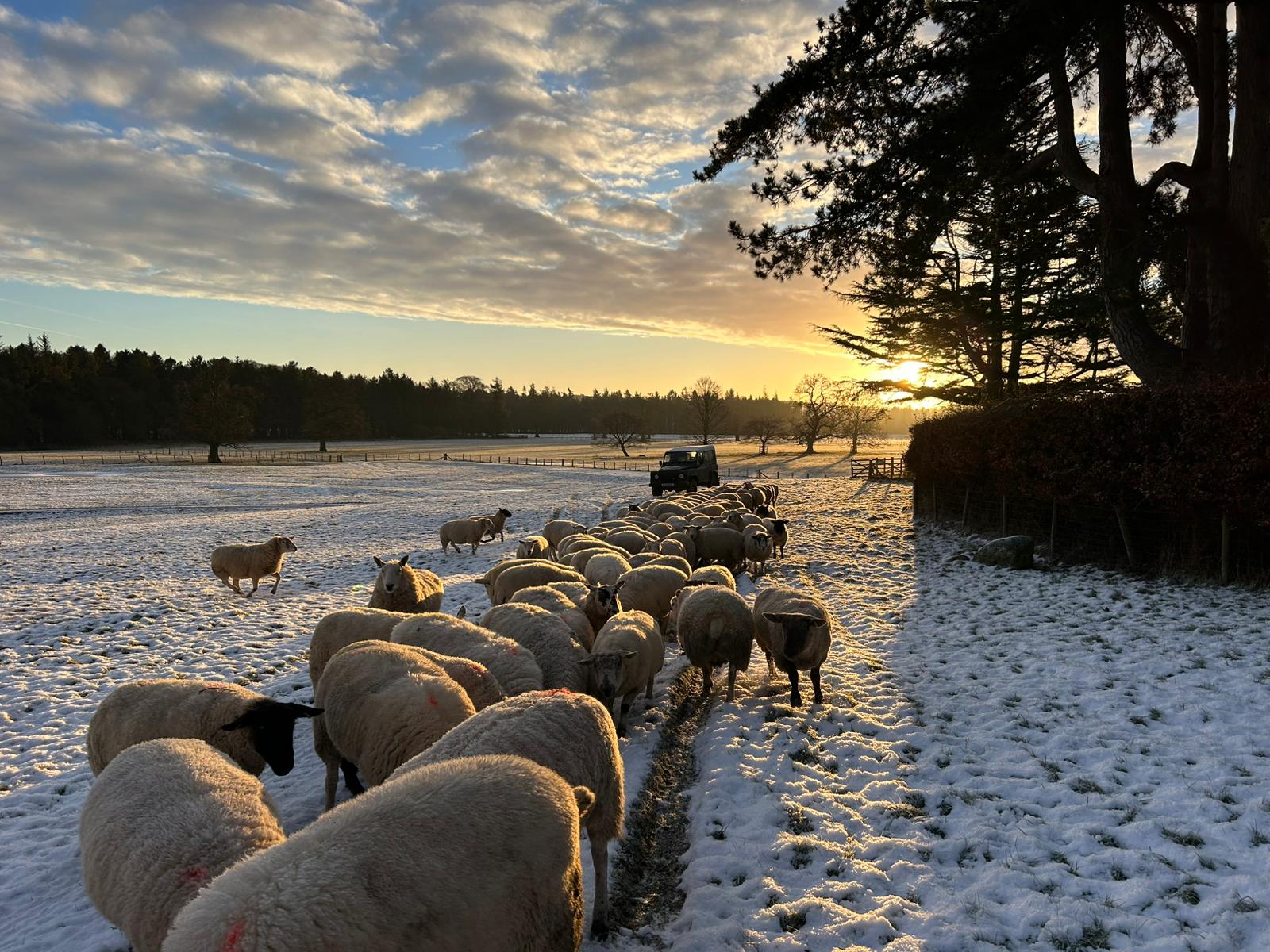This is a bit of an open-ended question and will vary depending on several factors, including breed, age, breeding status (i.e. pregnant or not, or male!), time of year, type of grazing land (hill/lowland/conservation site/short-term grass ley etc) and to some extent weather conditions.

However, there are a few general thoughts that should be considered:
- Sheep evolved to utilise grass and other herbage (forage) as a source of energy, protein, and fibre. They are good at this job! Artificial concentrated feedstuffs are a modern innovation designed to enhance performance in highly productive, commercial sheep breeds developed for maximum output. Forage is the foundation of sheep diets, providing fiber for healthy digestion. Common forage options include:
- Grass: Grasses like ryegrass, clover, and fescue are ideal for grazing.
- Hay: Dried forage is a valuable feed option during periods of limited pasture availability, such as winter.
- Silage: Fermented forage, such as corn or alfalfa silage, provides high energy and is particularly useful in intensive farming systems
- Grass is high in both sugars and protein during the leaf stage of growth – early spring and summer – before it has gone to seed, or after being cut for hay or silage.
- Winter grass in lowland areas may look green and lush in a warm winter, but the feed value is much lower due to reduced hours of sunshine, and higher water content. Most sheep will need hay or silage during the winter months as a basic requirement, unless they are on very extensive grazing, and all sheep will need this during heavy snow cover or prolonged hard frosts
- In sheep, around 75% of foetal growth occurs in the last six weeks of pregnancy. This is a time when the placenta is fully developed but the lamb is only around 15% of its birth weight. All breeding ewes will require a source of protein during this last six weeks of pregnancy, with ewes carrying multiple lambs having a higher demand.
So, if we consider a productive North Country Mule flock, scanned at 200%, lambing in mid-February, we need to be feeding the ewes to compensate for a lack of natural nutrition in the grazing, at a level that will support a 70-80kg ewe plus the development and growth of two lambs, and we need to start this feeding regime around Christmas. A standard feeding regime in this situation would be silage or hay (on a commercial farm a detailed silage analysis can be done, giving information about the protein and sugars available from the silage, which can be used to determine how much additional supplementation is required), plus an 18% protein ewe feed, starting at a rate of a quarter of a kg per head seven weeks before the due date, and increasing slowly up to 1kg per head split between two feeds per day for twin-bearing ewes at two weeks before birth, and continuing until peak lactation (milk production) at six weeks after birth.
A smaller breed of, say, 60kg bodyweight, lambing in march at 160%, the type and quantity of concentrated feed would be proportionately lower. My old ‘rule of thumb’ would be to start at 2oz (60g) per head per day and rising to the equivalent of half a pound (225g) of feed per lamb-in-utero, (so 500g for a ewe carrying twins) and only continuing to feed after birth until the spring grass is growing – obviously this will vary depending on location and altitude.
However, if we consider a smaller, less productive breed lambing in mid-April to May, we can rely much more on natural protein being available from the spring grazing, and with the right breeds may not need to supplement at all, or perhaps could offer a liquid feed or a protein feed block as an alternative to a standard ewe nut.
Pet sheep that are not breeding are often over-fed and can become excessively fat! They certainly do not need additional protein, and do not need anything at all other than natural grazing and a bit of forage in the winter, but as pets, the owner may well want to feed them something to keep them tame, or as a treat. Keep this simple and basic – bruised oats or sugar beet pellets are ideal. I’ve also heard of pet sheep that are partial to a digestive biscuit!
For male sheep it is important to remember that protein should not be given; a high-protein feed may result in a condition called urinary calculi, causing an obstruction in the urinary tract. Rams are best supported before and after the breeding season with a specifically designed ram feed, usually high in cereals, and for getting lambs fat if they are not already fat off grass, a specifically designed lamb finishing feed is the way to go.